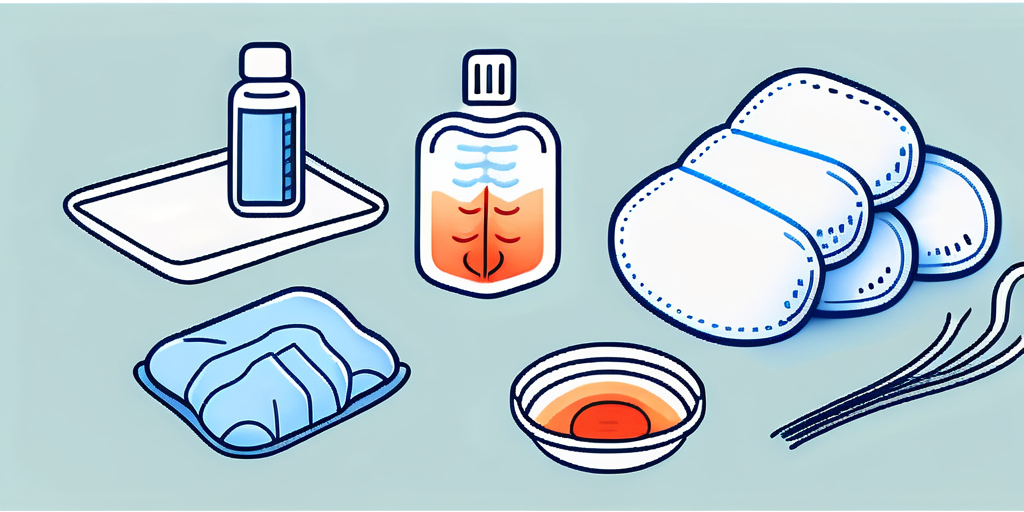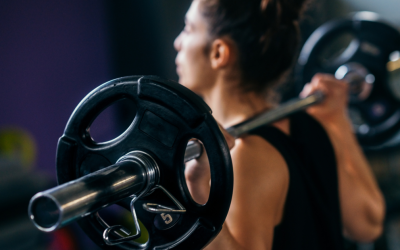Back and muscle pain can be incredibly debilitating, affecting every aspect of your daily life. Finding effective ways to alleviate this pain is crucial, whether it’s a result of an injury, poor posture, or prolonged sitting. This article will explore strategies to help you regain control over your well-being and live a pain-free life.
Understanding the Causes of Back and Muscle Pain
Understanding the root causes of back and muscle pain is essential to effectively treating it. Poor posture, excessive weight, and lack of exercise are common culprits. Injuries like strains or sprains and conditions like osteoporosis or arthritis can also contribute to this discomfort.
Transitioning into a sedentary lifestyle with prolonged sitting or improper lifting techniques can exacerbate these issues. By pinpointing the underlying reasons behind your pain, you can make informed decisions about the treatment options that best suit your needs.
Identifying the Impact of Poor Posture
One major cause of back and muscle pain is poor posture. Maintaining incorrect alignment for extended periods puts undue stress on your muscles and joints, leading to discomfort and potential injury. It is crucial to be mindful of your posture throughout the day and make necessary adjustments to sit and stand upright.
The Role of Weight and Exercise
Another significant factor is excessive weight or a lack of exercise. Carrying extra pounds strains your back and muscles, increasing the likelihood of pain. Regular physical activity, such as strength-building exercises, can help support your spine and alleviate muscle tension.
Moreover, the impact of weight on back and muscle pain extends beyond just physical strain. Excess weight can also lead to inflammation in the body, further aggravating existing pain conditions. Maintaining a healthy weight through a balanced diet and regular exercise is important to reduce the risk of developing or worsening back and muscle discomfort.
Exploring the Connection Between Injuries and Pain
Injuries like strains or sprains are common causes of acute back and muscle pain. They can occur from sudden movements, incorrect lifting of heavy objects, or strenuous activities without proper warm-up. Understanding how these injuries impact the body’s musculoskeletal system is crucial in preventing future occurrences and managing existing pain effectively.
Key Lifestyle Changes to Alleviate Back and Muscle Pain
When it comes to alleviating back and muscle pain, making lifestyle changes can make a significant impact. Here are some essential adjustments to consider:
- Ergonomic Workstations: Ensure your workspace is ergonomically designed, with a supportive chair, proper desk height, and adjustable monitor positioning. This setup will help maintain proper posture and reduce strain on your back and muscles.
- Regular Physical Activity: Incorporate gentle exercises, such as walking, swimming, or yoga, into your daily routine. These activities can strengthen your muscles, improve flexibility, and alleviate pain.
- Healthy Weight Management: Adopting a balanced diet and maintaining a healthy weight can significantly reduce stress on your back and muscles. Consult a healthcare professional or a registered dietitian to develop a personalized plan.
Proper Lifting Techniques
Many overlook the importance of proper lifting techniques, which can lead to back and muscle strains. Remember to keep your back straight when lifting heavy objects, use your leg muscles, and avoid twisting your body. Opting for mechanical assistance or seeking help from others when necessary can also prevent injuries.
Optimizing Sleep Environment
The quality of your sleep can directly impact your back and muscle health. Invest in a supportive mattress and pillow that align with your natural body curves. It is advisable to sleep on your side or back, as it allows for proper spinal alignment. Avoid sleeping on your stomach, as it can strain your neck and lower back.
Creating a relaxing sleep environment can promote better sleep and help alleviate back and muscle pain. Use blackout curtains or an eye mask to block out unwanted light. This can help regulate your sleep-wake cycle and improve the quality of your rest.
Furthermore, maintaining a cool and comfortable bedroom temperature can also contribute to better sleep and pain relief. The optimal room temperature for sleep is typically between 60 and 67 degrees Fahrenheit (15 to 19 degrees Celsius). Experiment with different bedding materials and adjust the thermostat to find what works best.
Effective Exercises and Stretches
Regular exercises and stretches can provide immense relief from back and muscle pain. Here are a few effective options:
- Core Strengthening: Building a strong core can help stabilize your spine and relieve back pain. Consider incorporating exercises like planks, bridges, and pelvic tilts into your routine.
- Stretching: Gently stretching your back, hamstrings, and hip flexors can help alleviate tension and improve flexibility. Incorporate stretches like cat-cow, child’s pose, and seated forward bend into your daily routine.
- Low-Impact Aerobics: Engaging in low-impact aerobic activities like swimming or cycling can promote overall fitness without placing excessive stress on your back and muscles.
The Benefits of Yoga
Yoga offers numerous benefits in relieving back and muscle pain. Combining stretching, strengthening, and mindfulness can reduce tension and improve posture. Consider joining a yoga class or following online tutorials on back pain relief.
Building Endurance and Flexibility
Endurance and flexibility are key components of a healthy back and muscles. Incorporating brisk walking, Tai Chi, or Pilates into your routine can help enhance your overall fitness level, reduce pain, and prevent future issues.
Additionally, incorporating resistance training into your exercise regimen can strengthen your muscles and improve your overall physical health. Exercises using resistance bands, free weights, or weight machines can target specific muscle groups and help prevent injuries by improving muscle stability.
It’s important to listen to your body and gradually increase the intensity and duration of your workouts to avoid overexertion. Remember to stay hydrated, maintain proper form during exercises, and consult a healthcare professional or a certified fitness trainer to create a personalized exercise plan tailored to your specific needs and goals.
Over-the-Counter Solutions to Alleviate Pain
When struggling with back and muscle pain, several over-the-counter solutions can provide temporary relief:
- Topical Analgesics: Creams, ointments, and patches containing menthol or capsaicin can help soothe sore muscles and relieve temporary pain.
- Oral Pain Relievers: Over-the-counter medications, such as acetaminophen or nonsteroidal anti-inflammatory drugs (NSAIDs), can help alleviate pain and reduce inflammation. However, it is essential to consult a healthcare professional before using these medications long-term.
- Heat and Cold Therapy: Applying heat or cold to the affected area can provide temporary relief. For muscle relaxation, use a heating pad or warm towel or apply an ice pack wrapped in a cloth to reduce inflammation.
Applying Topical Treatments Correctly
When using topical analgesics, it is crucial to follow the instructions carefully. Apply the product to clean, dry skin, and avoid using excessive amounts. If you experience any adverse reactions, discontinue use and consult a healthcare professional.
The Importance of Safe Medication Use
While over-the-counter medications can be helpful, it is crucial to use them responsibly. Follow the recommended dosage and duration of use specified on the packaging. If your pain persists or worsens, seek medical advice to explore alternative treatment options.
The Role of Chiropractic Care in Pain Relief
Chiropractic care offers a holistic approach to back and muscle pain relief. Highly trained chiropractors use manual adjustment techniques to align the spine, reduce nerve pressure, and restore proper function. This non-invasive and drug-free treatment option can bring significant relief to individuals suffering from chronic pain.
When visiting a chiropractor, they will conduct a thorough assessment to determine the underlying causes of your pain. Treatment plans may include adjustments, massage therapy, physical therapy, and lifestyle recommendations.
Utilizing Heat and Cold Therapy
Heat and cold therapies can effectively relieve back and muscle pain. Here’s how to utilize these methods:

- Heat Therapy: Applying heat to the affected area increases blood circulation, relaxes muscles, and relieves pain. Use a warm towel, heating pad, or warm bath for 15-20 minutes.
- Cold Therapy: Cold therapy helps reduce inflammation and numbs the affected area, relieves pain. Wrap an ice pack in a cloth and apply it to the affected area for 15-20 minutes.
Alternate Heat and Cold Therapy
In some cases, alternating between heat and cold therapy may provide better pain relief than using either method alone. For example, you can apply heat for 15 minutes and cold therapy for 10 minutes. Always protect your skin from direct contact with heat or ice to avoid burns or frostbite.
Using Heat and Cold Therapy Safely
It is essential to follow safety guidelines when using heat or cold therapy. Avoid applying extreme temperatures directly to your skin, and limit each session to 20 minutes. If you have circulatory issues or an existing medical condition, consult a healthcare professional before using these therapies.
Tips for Maintaining Pain-Free Living
Maintaining a pain-free lifestyle becomes essential once you effectively alleviate back and muscle pain. Here are some tips to minimize the chances of pain recurrence:

- Exercise Regularly: Regular exercise helps keep your muscles strong and flexible. A combination of cardiovascular exercise, strength training, and stretching supports a healthy back and musculoskeletal system.
- Practice Good Posture: Be mindful of your posture throughout the day, both when seated and standing. Maintain the natural curvature of your spine and avoid slouching or hunching over your desk or electronic devices.
- Take Regular Breaks: If you work sedentary hours, remember to take regular breaks to stand up, stretch, and walk around for a few minutes. This will help alleviate muscle tension and prevent stiffness.
- Use Proper Lifting Techniques: When lifting weights at the gym or moving heavy objects at home, always use proper techniques to avoid muscle strains or back injuries. Bend your knees, lift with your legs, and avoid twisting your body.
- Maintain a Healthy Weight: Excess weight strains your back and muscles. Adopting a healthy diet and maintaining a healthy weight will reduce the risk of developing or exacerbating back and muscle pain.
By understanding the causes of back and muscle pain, making key lifestyle changes, and utilizing effective pain relief strategies, you can alleviate discomfort and regain control over your physical well-being. Adopting a proactive approach to managing pain and practicing healthy habits will help you maintain a pain-free life, allowing you to enjoy all it offers.



